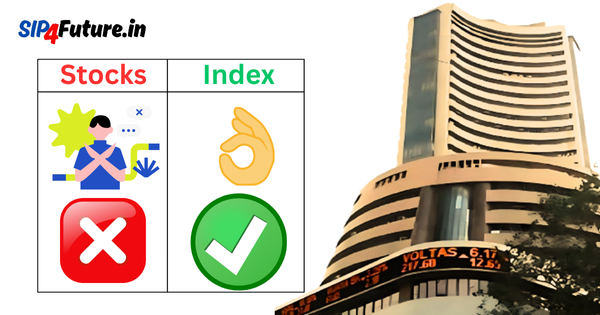Bharat Petroleum Corporation Ltd (BPCL), a titan in India’s oil and gas sector, is set to unveil its Q4 FY25 financial results on April 29, 2025. This eagerly awaited announcement will shed light on the company’s performance for the quarter and full fiscal year ending March 31, 2025. Investors, analysts, and stakeholders are buzzing with anticipation, eager to dissect BPCL’s revenue growth, profit margins, and potential dividend announcements. With the board meeting also considering dividend recommendations, the results could significantly influence BPCL’s stock performance and investor sentiment. This article dives deep into what to expect, how global and domestic factors impact BPCL, and why these results matter.
Why BPCL’s Q4 FY25 Results Matter
BPCL, a Maharatna public sector undertaking (PSU), plays a pivotal role in India’s energy landscape, refining and distributing petroleum products across the nation. As one of the country’s largest oil marketing companies, its financial results reflect not only its operational efficiency but also broader trends in the oil and gas sector. The Q4 FY25 results are particularly significant because they cap off a fiscal year marked by volatile crude oil prices, geopolitical tensions, and evolving government policies.
The results will provide insights into BPCL’s ability to navigate these challenges while maintaining profitability and rewarding shareholders. With a trading window closure from April 1 to May 1, 2025, to prevent insider trading, BPCL is ensuring transparency and compliance with regulations set by the Securities and Exchange Board of India (SEBI). This move underscores the company’s commitment to market integrity as it prepares to share its performance metrics.
What to Expect from BPCL’s Financial Performance
BPCL’s Q4 FY25 financial results are expected to reflect a mix of resilience and challenges. Based on historical data and recent trends, here’s a breakdown of key performance metrics investors should watch:
Revenue Growth
BPCL reported a robust Q3 FY25 performance, with revenue reaching ₹1.27 trillion, a significant jump from ₹1.18 trillion in Q2 FY25, according to posts on X. Analysts estimate Q4 revenue could align with or exceed these figures, driven by higher domestic demand for petroleum products and strategic pricing adjustments. However, global crude oil price fluctuations, which hovered between $70–$80 per barrel in early 2025, could temper revenue growth.
Profit Margins
Profit margins are a critical focus, as BPCL’s Q3 FY25 EBITDA margin was 5.94%, up from 3.85% in Q2 but below the estimated 7.4%. The company’s ability to optimize refining margins and control operational costs will be key. Lower refining margins globally, due to oversupply in certain markets, may pressure profitability, but BPCL’s focus on high-margin products like aviation turbine fuel (ATF) could bolster results.
Dividend Announcements
The board’s consideration of a dividend recommendation is a major highlight. BPCL has a history of rewarding shareholders, with dividends often reflecting its cash flow strength. For context, other PSUs like SBI and Tata Investment Corporation announced dividends in FY25, suggesting BPCL may follow suit. A dividend payout could boost investor confidence, especially given BPCL’s stock performance, which saw a +4.40% one-day return recently.
Table: BPCL Q3 FY25 Financial Highlights
| Metric | Q3 FY25 | Q2 FY25 | Analyst Estimate |
|---|---|---|---|
| Revenue (₹) | 1.27 trillion | 1.18 trillion | 1.12 trillion |
| Net Profit (₹) | 46.4 billion | 24 billion | 49.77 billion |
| EBITDA (₹) | 75.80 billion | 45.47 billion | 83.12 billion |
| EBITDA Margin (%) | 5.94% | 3.85% | 7.4% |
Source: X Post by REDBOXINDIA, January 22, 2025
How Global Market Scenarios Influence BPCL
The global oil market in 2025 has been a rollercoaster, impacting BPCL’s operations and financial results. Key factors include:
Crude Oil Prices
Crude oil prices, a primary driver of BPCL’s input costs, have been volatile due to OPEC+ production cuts and geopolitical tensions, particularly in the Middle East. According to the U.S. Energy Information Administration (EIA), Brent crude averaged $74 per barrel in Q1 2025, with forecasts suggesting a slight uptick in Q2. Lower prices benefit BPCL’s refining margins but could reduce upstream revenue from its exploration and production (E&P) segment.
Demand Dynamics
Global demand for petroleum products has been mixed. While India’s domestic demand for diesel and petrol remains strong, driven by industrial growth and rising vehicle ownership, weaker demand in Europe and parts of Asia has pressured export margins. BPCL’s ability to balance domestic and international sales will be crucial for sustaining revenue growth.
Geopolitical Risks
Tensions in key oil-producing regions, coupled with U.S. sanctions on certain exporters, have disrupted supply chains. These dynamics could lead to short-term price spikes, benefiting BPCL’s inventory valuations but increasing procurement costs. The company’s strategic partnerships, such as with GAIL India, for gas distribution may help mitigate some risks by diversifying revenue streams.
How Government Decisions Shape BPCL’s Stock Price
As a PSU, BPCL’s performance and stock price are heavily influenced by government policies. The Indian government, holding a 52.98% stake in BPCL as of March 2025, plays a significant role in its strategic direction. Key decisions impacting BPCL include:
Fuel Pricing Policies
The government’s decision to deregulate petrol and diesel prices has allowed BPCL to align retail prices with global benchmarks, improving margins. However, periodic interventions, such as price caps during inflationary periods, can squeeze profitability. In 2025, the government’s focus on controlling inflation may limit BPCL’s pricing flexibility.
Disinvestment Plans
Speculation around BPCL’s disinvestment has resurfaced in FY25. The government’s earlier plan to privatize BPCL was shelved in 2022, but renewed discussions could impact stock volatility. A successful stake sale could unlock value but also introduce uncertainty, as seen in past PSU disinvestments like LIC.
Renewable Energy Push
India’s ambitious target of achieving net-zero emissions by 2070 has prompted BPCL to invest in green energy. Initiatives like biofuel blending and hydrogen projects align with government mandates but require significant capital expenditure. These investments may pressure short-term financial results but position BPCL as a leader in India’s energy transition.
Table: Government Policies Impacting BPCL
| Policy Area | Impact on BPCL | Potential Stock Effect |
|---|---|---|
| Fuel Pricing | Improved margins but periodic caps | Moderate volatility |
| Disinvestment | Potential value unlocking | High volatility |
| Renewable Energy | Long-term growth, short-term costs | Stable to positive |
When Will BPCL Announce Its Dividend?
The board meeting on April 29, 2025, will consider a dividend recommendation, a critical factor for income-focused investors. BPCL’s dividend policy typically balances shareholder rewards with reinvestment needs. In FY24, BPCL paid a final dividend of ₹21 per share, and analysts expect a similar or higher payout in FY25, given the company’s cash reserves and profitability.
The announcement will likely include a record date and payment timeline, subject to shareholder approval at the Annual General Meeting (AGM). Investors should monitor BSE and NSE for official filings post the board meeting. A generous dividend could catalyze a rally in BPCL’s stock, which has shown a +10.71% return over the past month.
What Drives BPCL’s Stock Performance?
BPCL’s stock has been a mixed bag in FY25, reflecting broader market trends and company-specific factors. Here’s a look at its historical returns and current drivers:
Historical Stock Returns
| Time Frame | Return (%) |
|---|---|
| 1 Day | +4.40% |
| 5 Days | +1.40% |
| 1 Month | +10.71% |
| 6 Months | -0.68% |
| 1 Year | -0.36% |
| 5 Years | +71.71% |
Source: Provided Data
The stock’s +71.71% five-year return highlights its long-term value creation, despite short-term fluctuations. Recent gains, including a +4.40% one-day surge, reflect optimism around Q4 FY25 expectations and broader market recovery, as noted in X trends on April 28, 2025.
Key Drivers
- Earnings Surprises: Stronger-than-expected Q4 results could drive further gains, as seen with peers like Reliance Industries, which beat estimates in Q4 FY25.
- Sector Sentiment: The oil and gas sector’s outlook remains cautiously optimistic, with domestic demand offsetting global headwinds. BPCL’s alignment with India’s energy needs supports its stock resilience.
- Macro Factors: Rising interest rates and inflation could dampen market sentiment, but BPCL’s PSU status and dividend potential make it a defensive play.
How Sector Impacts Influence BPCL’s Outlook
The oil and gas sector in India is undergoing a transformation, driven by rising energy demand, sustainability goals, and technological advancements. BPCL’s financial results will reflect these dynamics:
Domestic Demand Growth
India’s petroleum consumption is projected to grow at a CAGR of 4.5% through 2030, per the Ministry of Petroleum and Natural Gas. BPCL’s extensive retail network and refining capacity position it to capture this growth, supporting revenue and margins.
Competitive Landscape
BPCL faces competition from private players like Reliance Industries and international oil majors. Its ability to innovate, such as through digital payment systems at fuel stations, will be critical for maintaining market share.
Sustainability Trends
The shift toward renewables and electric vehicles (EVs) poses long-term challenges. BPCL’s investments in green hydrogen and ethanol blending, as outlined in its annual report, aim to future-proof its business model.
Future Targets and Analyst Outlook
Analysts are optimistic about BPCL’s Q4 FY25 financial results and long-term potential, with several research institutes providing price targets based on historical performance and sector trends:
- Motilal Oswal: ₹750–₹800 (12-month target), citing strong refining margins and dividend yield.
- ICICI Securities: ₹720, emphasizing BPCL’s green energy pivot and domestic demand growth.
- HDFC Securities: ₹780, factoring in stable crude prices and PSU disinvestment prospects.
These targets suggest a 10–15% upside from BPCL’s current trading price of approximately ₹650–₹670, as per Moneycontrol. However, risks like crude price volatility and policy shifts could alter these projections.
Table: Analyst Price Targets for BPCL
| Research Institute | Target Price (₹) | Time Frame |
|---|---|---|
| Motilal Oswal | 750–800 | 12 months |
| ICICI Securities | 720 | 12 months |
| HDFC Securities | 780 | 12 months |
Conclusion: A Pivotal Moment for BPCL
Bharat Petroleum Corporation Ltd’s Q4 FY25 financial results, set for release on April 29, 2025, mark a defining moment for the company and its stakeholders. With expectations of robust revenue growth, stable profit margins, and a potential dividend announcement, BPCL is poised to reinforce its position as a cornerstone of India’s energy sector. Global market dynamics, government policies, and sector trends will shape its performance, but BPCL’s strategic initiatives and operational resilience inspire confidence.
Investors should stay tuned to BPCL’s official website and stock exchange filings for the latest updates. While the stock’s historical returns and analyst targets point to a positive outlook, market volatility warrants caution. As BPCL navigates the evolving energy landscape, its Q4 results will offer a window into its financial health and future trajectory.
Disclaimer: This article is provided for educational purposes only and does not constitute financial advice. The views and recommendations are based on publicly available data and analyst opinions, not those of the author or publisher. Investors should consult certified financial advisors before making investment decisions.




